



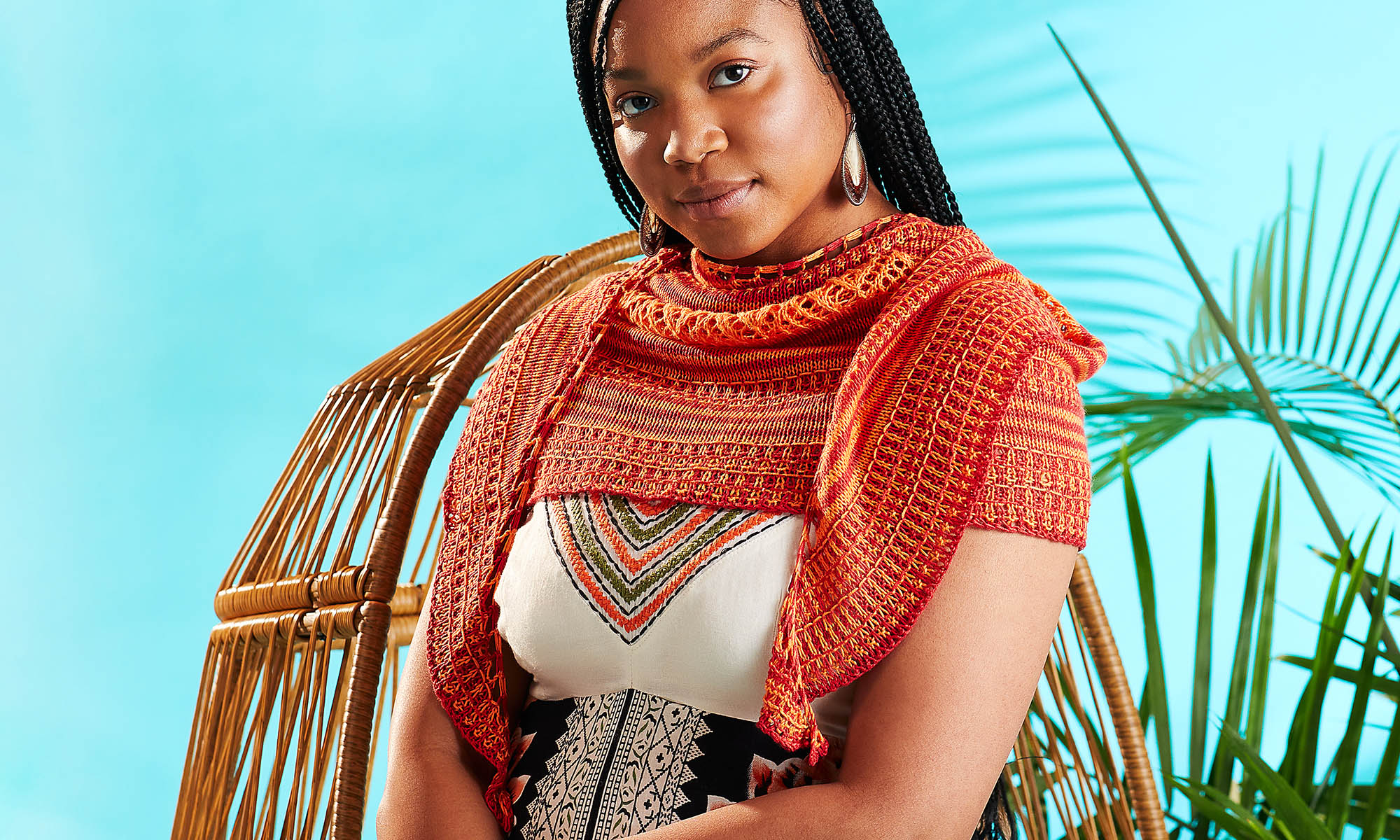

Universal Yarn Creative Network
Inspiration By Design








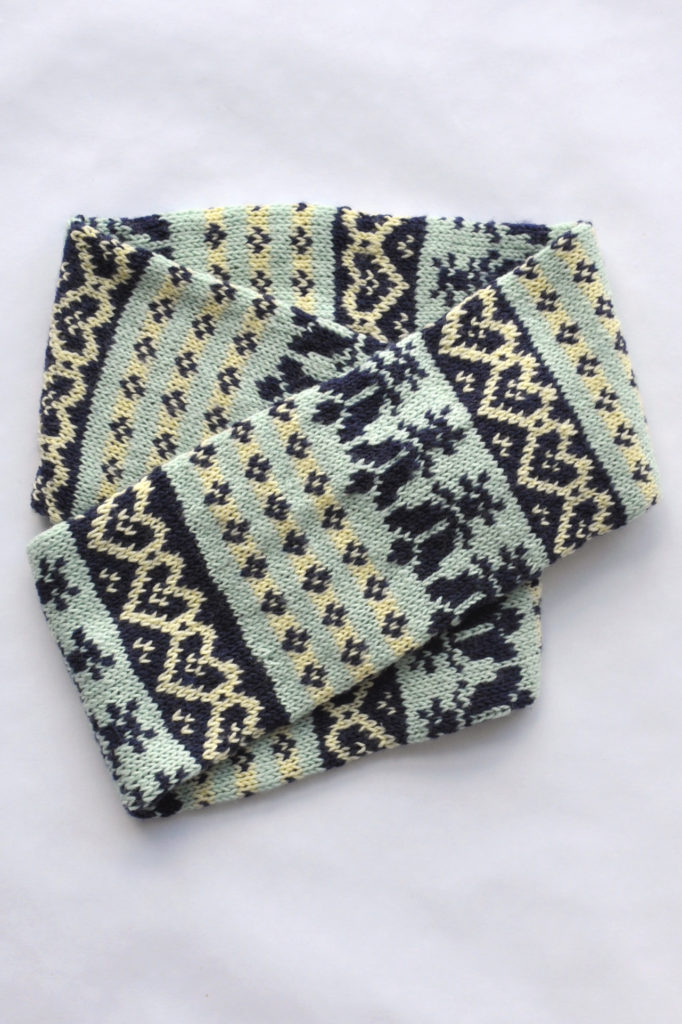
Το FortuneJack Casino αναδεικνύεται ως ένας από τους κορυφαίους παίκτες στον χώρο των online καζίνο. Με μια εντυπωσιακή γκάμα παιχνιδιών, εκπληκτικές προσφορές και μια φιλική προς τον χρήστη πλατφόρμα, το FortuneJack καταφέρνει να προσφέρει μια μοναδική εμπειρία στους παίκτες του.
Το FortuneJack ξεκίνησε το ταξίδι του το 2014, με μια ομάδα από εμπειρογνώμονες του χώρου των τυχερών παιχνιδιών. Από τότε, έχει καταφέρει να καθιερωθεί ως ένα από τα πιο αξιόπιστα καζίνο σε παγκόσμιο επίπεδο.

Το FortuneJack Casino προσφέρει μια εντυπωσιακή ποικιλία παιχνιδιών, που ικανοποιεί κάθε προτίμηση. Από τα κλασικά φρουτάκια μέχρι τα σύγχρονα video slots, ο κατάλογος των παιχνιδιών είναι πλούσιος και ποικίλος. Επιπλέον, το FortuneJack προσφέρει μια ευρεία γκάμα από τα δημοφιλέστερα τραπέζια παιχνίδια, όπως το Blackjack, το Ρουλέτα, το Πόκερ και πολλά άλλα.
Η ασφάλεια των παικτών αποτελεί προτεραιότητα για το FortuneJack Casino Ελλάδα. Η πλατφόρμα χρησιμοποιεί την πιο σύγχρονη τεχνολογία κρυπτογράφησης για να διασφαλίσει την προστασία των προσωπικών δεδομένων και των συναλλαγών των παικτών.
Το FortuneJack ξεχωρίζει για την υποστήριξη πολλών δημοφιλών κρυπτονομισμάτων, προσφέροντας έτσι στους παίκτες μια ευέλικτη και ασφαλή λύση για τις συναλλαγές τους. Αυτό δίνει την δυνατότητα στους παίκτες να επιλέξουν το κρυπτονόμισμα που τους εξυπηρετεί καλύτερα.
Το FortuneJack Casino είναι γνωστό για τις ενδιαφέρουσες προσφορές και τα γενναιόδωρα μπόνους που προσφέρει στους παίκτες του. Από δωρεάν περιστροφές σε δημοφιλή παιχνίδια μέχρι αποκλειστικά τουρνουά, το FortuneJack δεν παύει να εκπλήσσει και να ανταμείβει τους πιστούς παίκτες του.
Μια από τις ισχυρότερες πτυχές του FortuneJack είναι η ζωντανή κοινότητα παικτών που έχει δημιουργηθεί γύρω από την πλατφόρμα. Οι παίκτες μπορούν να ανταλλάξουν απόψεις, να μοιραστούν εμπειρίες και να δημιουργήσουν νέες φιλίες. Επιπλέον, η ομάδα υποστήριξης του FortuneJack είναι πάντα πρόθυμη να βοηθήσει τους παίκτες με οποιαδήποτε απορία ή ανησυχία.
Το FortuneJack Casino αναδεικνύεται ως ένας εξαιρετικός προορισμός για τους λάτρεις των τυχερών παιχνιδιών. Με εκατοντάδες παιχνίδια, ασφαλείς πληρωμές και μια ζωντανή κοινότητα παικτών, το FortuneJack σας προσκαλεί σε έναν κόσμο γεμάτο διασκέδαση και ευκαιρίες. Καλή τύχη!
Seasons Greetings from the Universal Yarn Team! Today, we’re pleased to share a special free pattern with you for the Christmas season: the Carolina Holly hat (pattern link)! Holly – like poinsettias, mistletoe, and ivy – conjures images of the holidays. The spiky plant is evergreen and beautiful, and it was the inspiration for the Carolina Holly hat.

This free pattern is a load of fun to knit. It takes three skeins of Deluxe Worsted – and that’s enough to make two hats. Of our line of yarns, Deluxe Worsted might just be my favorite. It’s excellent for every type of project, creates long-wearing fabric, and perfectly balances softness with the crunch of pure wool that I love. Plus, there are so many colors to choose from. For this hat I chose Sangria, City Turf, and Slate, but there are so many shades of red, green, and grey in the palette. I encourage you to find the combination that leaves you feeling inspired! Prefer superwash wool? You’re in luck – our machine-washable Deluxe Worsted Superwash would work perfectly as a substitute.
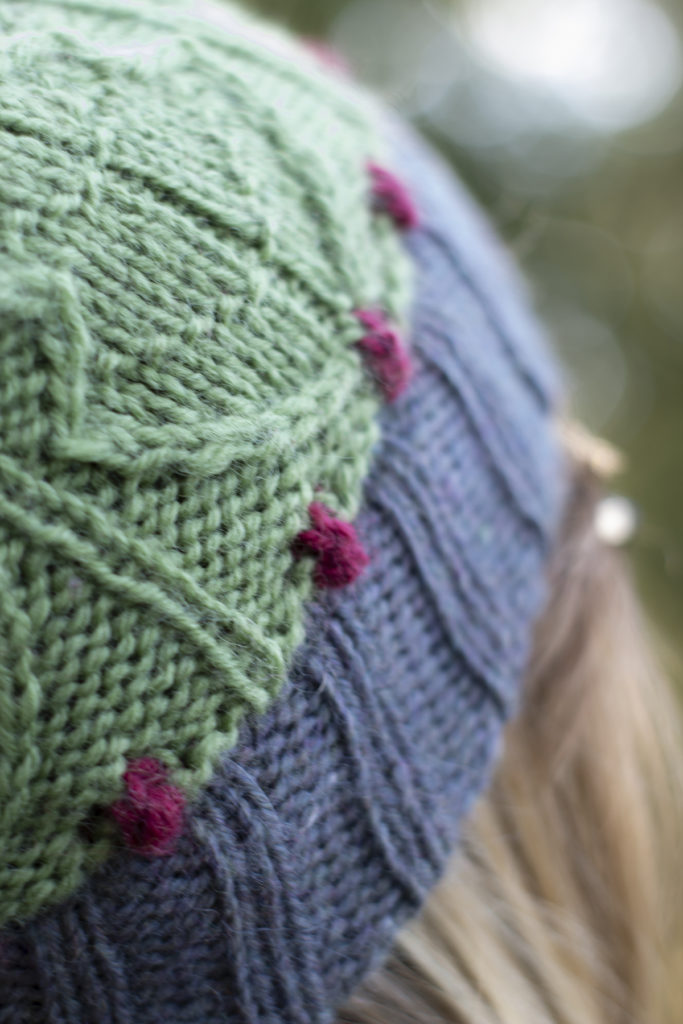
I wanted to give this hat some special touches. A double-thick brim ensures a warm and comfortable fit. A row of mini-bobbles knit in a rich red create little holly berries, and a large red pom-pom balances out the pop of red. Finally, to incorporate the grey used in the brim, the same color is used to add speckles to the pom-pom. The speckled pom-pom idea was not my own. I was inspired by designer Kiyomi Burgin, who has used this technique in her own work. You can find her post on speckled pom-poms here (link).
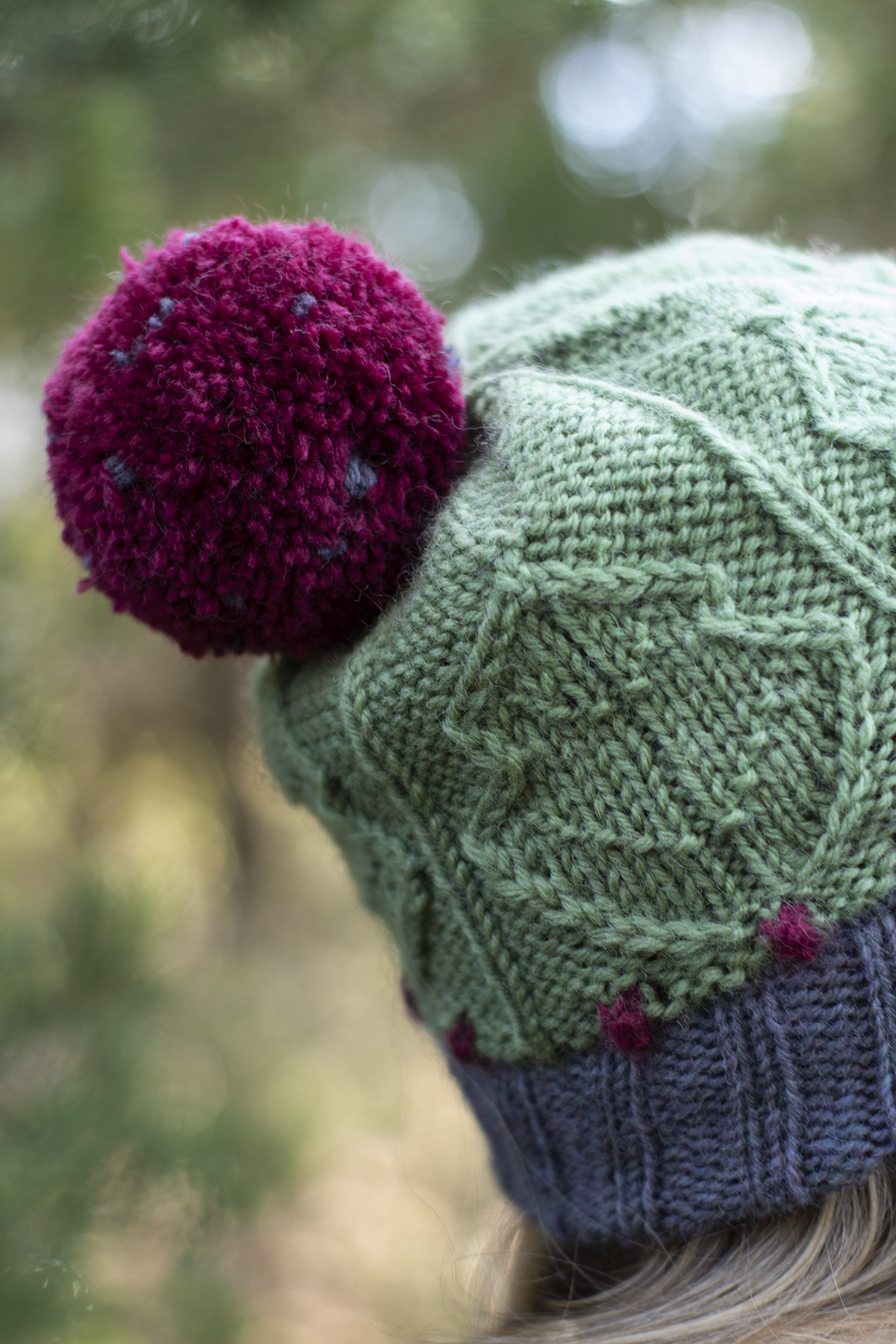
For your convenience, I’ve also created a tutorial. I hope you find it to be helpful! You’ll need to make your pom-pom before starting. If you haven’t done this before, don’t worry! You can find Amy’s tutorial on how to make pom-poms here (link).
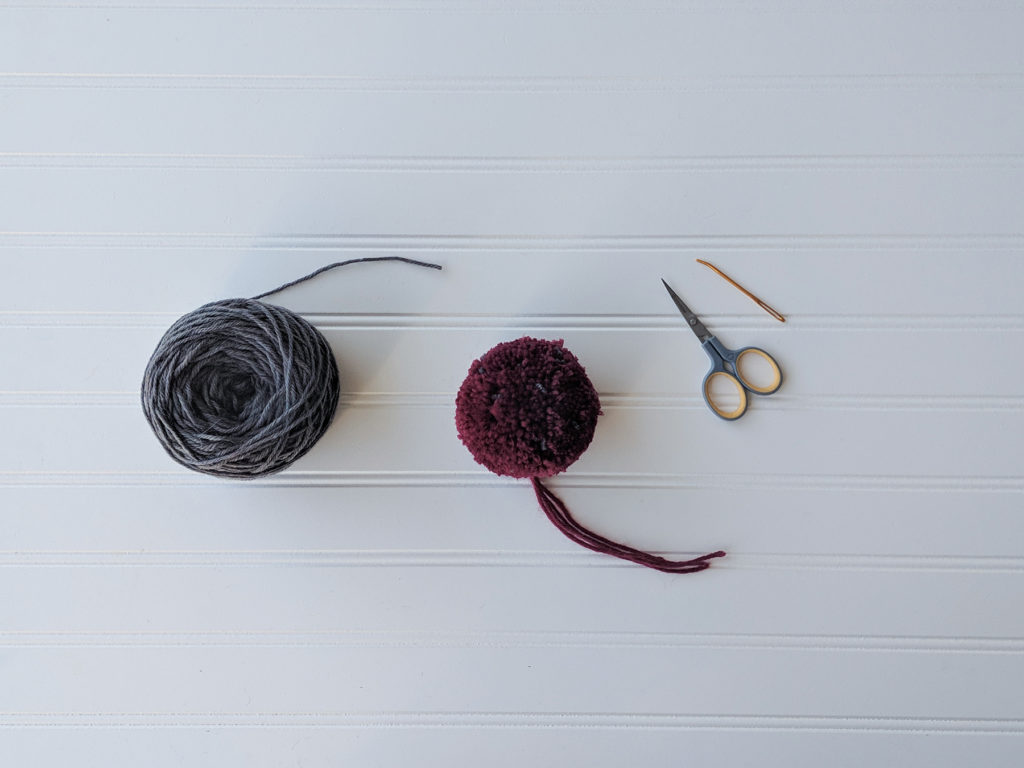








Today is Thanksgiving – since it is a national holiday in the United States, many of us will be spending the day with friends and family. Not only is today Thanksgiving, but November is also Native American Heritage Month. As such, I’m taking some time to talk about the incredible textile work of indigenous Americans.
Disclaimer: this is in no way a comprehensive overview. I am touching on only a few things. I could go on for much longer than I will, and I’ll happily include some information for further reading.
When I initially decided to use today’s post as a platform to touch on Native American Heritage Month, my brain went to knitting – it always does. I wanted to look into traditional Cowichan sweater knitting. Okay – I know we’re based in the US, and that today is a US holiday, but the first tradition I’d like to talk about originates in Canada. Anyway – these iconic sweaters originate from the Coast Salish people of British Columbia.

During the mid-nineteenth century, European settlers introduced domestic sheep and the craft of hand-knitting to the region. In an excellent overview of the history of Cowichan Knitting (pdf link), Margaret Meikle explains that native women skilled in handcrafts likely taught themselves to knit, working from samples available to them from the European settlers. Although the first Cowichan sweaters were solid-colored, Fair Isle sweaters influenced the colorwork these sweaters are known for early in the twentieth century.
In her book Knitting Around the World, Lela Nargi explains that the yarn used to create these sweaters as thick, handspun, single-ply, and naturally colored. These sweaters are as utilitarian as they are attractive. They are hardy and perfect to withstand cold, wet climates. They also feature beautiful patterning – each symbol with a story behind it.
In the children’s book, Yetsa’s Sweater (pictured above), author Sylvia Olsen demonstrates how the sweaters are personal. In the book, Yetsa’s grandma explains that the sweaters tell a story about family. I’d recommend checking out this book if you’re looking to share your love of knitting with young people in your life, but there is no shame in reading it as an adult!

If you now find yourself dreaming of a Cowichan-style sweater, I also discovered that Sylvia Olsen also wrote Knitting Stories, a book featuring Salish-inspired designs including Yesta’s Bolero – a perfect match for Deluxe Worsted Naturals (Pewter and Millet, anyone?). There are many interpretations of Cowichan sweaters on Ravelry. One in particular I like is Jane Richmond’s West Coast Cardigan – which she describes as being “inspired, in respectful admiration, by the Cowichan Sweaters that are abundant on Vancouver Island and are a tradition of the Coast Salish people” and clarifies that the design is not a real Cowichan sweater, only inspired by this traditional style. For her design, I’d recommend holding two strands of Deluxe Chunky Naturals together as one to obtain gauge.

Next, I’d like to touch on weaving.

In Alaska, the Tinglits Chilkat people created beautiful Chilkat blankets. Made for movement, these blankets feature long-fringed borders that swayed beautifully with the dancers who wore them during ceremonies. The designs displayed on the blankets are the crests of the family or groups for whom they were woven. These weavings were made from mountain goat hair that was handspun and dyed naturally. The art of Chilkat blanket weaving was a dying craft, but Jennie Thlunaut (pictured above) is single-handedly credited for keeping the tradition alive.

Based on my reading, it seems well understood that the Pueblo people were weaving centuries before the European invasion of North America. Their weavings were made from plant fibers, such as cotton and yucca, but it was not uncommon for human, dog, and wild animal hair to be incorporated, too. When Spanish settlers introduced Churro sheep to the region, wool began to replace cotton in textiles. When the Pueblo and Navajo people encountered one another during the seventeenth century, the Pueblo shared their knowledge of weaving with the Navajo.

Because the Navajo were largely nomadic, working with sheep and wool was well-suited to their lifestyle. The Navajo primarily created garments and blankets; however, in the late nineteenth century the political climate was harmful to the people and changed the purpose of their craft. This is when Navajo rugs became popular, and they remain that way today.
Danielle Hena, a curatorial intern at the Wheelwright Museum, explains that “stories, curiosities, and beauty are carried within each textile: stories from history, curiosities that will continue to be curiosities, and beauty that was transferred from a weaver’s vision to the viewers.” She perfectly sums up what makes the rich textile heritage of indigenous people so unique.
Feeling inspired? I know I am! I’d like to share an inspirational resource I uncovered while writing this post: the organization Adopt-a-Native Elder’s Rug Program. This organization facilitates a market for Navajo elders to sell their beautiful handwoven rugs. I thought this was pretty neat and I couldn’t resist sharing.

Still, if you want to make things with your own hands, there are plenty of resources out there! For example, Amy is an avid weaver and occasionally posts about the topic on our blog. You can find her weaving posts here (link). You may also be interested in a pattern – if so, check out the Sparkle Windows Scarf. This thing is gorgeous! Finally – check your local yarn shop for weaving classes. Our customers have shared projects woven using many of our yarns, and it’s such a lovely way to see it transformed.

I hope you’ve enjoyed this post, have learned something from it, and feel inspired!
If you’re interested in reading more, here are the resources I’ve used for this post:
On Cowichan Knitting
Cowichan Indian Knitting by Margaret Meikle (link)
Knitting Around the World: A Multistranded History of a Time-Honored Tradition by Lela Nargi; (pp. 217-225)
Yetsa’s Sweater by Sylvia Olsen
On Weaving
For more information about Jennie Thunaut and Chilkat Blankets, I recommend exploring Masters of Traditional Arts, an ongoing interdisciplinary project produced by Documentary Arts focusing on the recipients of the National Heritage Fellowship (link here).
Unpacking a phrase: The Chilkat Blanket by Christy Christodoulides (link)
Three Southwest Weaving Cultures; adapted from Beyond the Loom: Southwestern Weaving Traditions exhibit, Colorado University Museum (link)
Wheelwright Museum Blog – Archives of Navajo Textiles (link)
It’s Free Pattern Friday!
The scarf gets its name from the plump yarn and extra-long length. Despite the length, this scarf knits up so quickly! Can you believe you only need to cast on 20 stitches?
This scarf mixes intarsia and self-striping Uptown Super Bulky Amplify for exciting results. We think this pattern is great for beginners looking to learn a new skill. Intarsia is easy, we promise!
Be careful – if your outfit matches a free pattern too closely, your colleagues may insist that you model it!
It’s okay, though! I’m totally up for wrapping myself in knitwear all day, every day! Plus, I’m almost always cold! We wrapped this scarf around my neck many times. Perfect for the snowy weather the north has been experiencing this week!
We hope you enjoy this week’s free pattern! Have a fabulous weekend!
I love cables. More than lace, more than mosaic, more than a dozen other techniques, cables just embody knitting for me. When you pair them with a good quality wool, even better. And when you make it a chunky wool so you can see your progress grow quickly, that’s a home run. So with no further ado, four popular cabled projects in our Deluxe Chunky 100% wool!
First Valentina (pattern link here).
Honestly, I am forever astonished that this is a free pattern. It’s just gorgeous, and filled with the excellent attention to detail that Amy Gunderson brings to all her designs.
Take a look at those saddle shoulders. They let the cables run unbroken from cuff to collar.
 The moss stitch underside is where alterations for size are made, to avoid disturbing the bold and beautiful Dueling Cables design.
The moss stitch underside is where alterations for size are made, to avoid disturbing the bold and beautiful Dueling Cables design.
This one was made in Deluxe Chunky 91904 Pomegranate Heather, but I keep thinking of going green, maybe with 61635 Deep Jungle which has a bit of blue as well.
Next: the Catawba River Poncho (pattern link here).
This isn’t a free pattern, but it has remained a top 5 bestseller since its release. Take a closer look and see why!
Sized Small to 2X/3X, the poncho is fastened with two buttons on each side. You get good range of motion without looking like you’re swallowed up.
Lace is married to cables for the main body design – the best of two techniques joined together!
This is a pattern from Amy Gunderson. Here she is posing in the Catawba River Poncho she knitted for herself, so you can see how it falls. Really lovely!
Next, another bestseller: the Pine View Scarf (pattern link here).
We offered this scarf as a kit at the holidays last year, then as a paid pattern after the first of this year.
If you like cabling, but maybe not all over, or if you want to try it out in small doses, this is a great project. The pines at both ends that give the scarf its name are cabled, but the background and borders are seed stitch and reverse stockinette. Deluxe Chunky on US size 10 (6mm) needles goes fairly quickly in this simple, pretty scarf.
Finally, the Rutherford Beret (pattern link here).
I made my own Rutherford Beret in Deluxe Chunky color 91467 Tulipwood, and I can tell you it’s an easy one-hank pattern. The cables are all single twists. And how cute is that little i-cord loop at the top? Easy to pull it off and hang it up by the door.
We had someone here in the office do a two-color version. Neat idea!
We hope these designs provide a little knitspiration.
Keep on cabling!
October is Breast Cancer Awareness Month, a topic near and dear to us. So many of our friends and relatives have been touched by this awful disease. As crafters, our natural impulse is to reach out and comfort those we love with a gift from the heart. Here are a few options.
This is the Cancer Comfort Cap in Cotton Supreme DK (pattern link here).
We designed this cap at the request of Yonca, our sales director. When she requested this cap, it was for a friend who was about to undergo chemotherapy. We wish we could say this was the last time a friend would need this kind of help. According to breastcancer.org, 1 in 8 American women will develop invasive breast cancer in the course of her lifetime (as well as 1 in 1000 men).
It’s knitted in the round in our Cotton Supreme DK, which we picked because it’s very soft, and chemo scalps can be quite sensitive – something to keep in mind when choosing yarn.
Next, Healing Vibes in Cotton Supreme DK (pattern link here).
Amy Gunderson designed this one. She says she thinks of this as a knitted representation of rays of radiation zapping cancer away. We hope someone wearing this will feel the strength and energy Amy has put into this design.
This hat was originally designed for Halos of Hope, a non-profit organization that provided hats to cancer patients undergoing chemotherapy.
Just published today, this is the Overcast Cap in Cotton Supreme DK (pattern link here).
This pattern is named for the shadow of cancer that affects the lives of so many. Cancer patients and their loved ones alike can feel like they are helpless and hopeless in their situations. We offer this hat pattern as a small token of comfort and a concrete action that can be taken – perhaps a knitting project will take your mind off of unpleasantries in your life, whether that means cancer or any other type of illness or grief. We hope the sun will shine again for you soon.
If you have questions about breast cancer detection and treatment, the American Cancer Society has a helpful page. Mammogram guidelines can also be found at CancerCare.org.
To all of our generous-hearted crafting friends, we wish you peace and good health.
It’s Free Pattern Friday!
Today, the Fresco Cardigan in Adore and Adore Colors (pattern link here).
Love colorwork but not Fair isle? This one’s for you!
Rachel Brockman used self-striping Adore Colors to do the heavy lifting in the body and sleeve stripes. Then she used mosaic knitting in solid Adore to create the design around the waist. Only one color is used per row. The design appears by slipping stitches in different colors, and voila!
We hope you enjoy this lovely bit of Fall-to-come.
Happy crafting!
It’s that time of year again! With very mixed feelings, we send our little ones off to school. We might be old hands at the transition, or it might be our very first time. It’s almost guaranteed, though, that they’ve grown since last year. Fortunately, we have a collection of kids’ tops to get you through the warm-to-cool transition, in a multitude of sizing!
The Cotton True Kids Collection, featuring 6 knitting projects for kids (Ravelry e-book link here).
All are sized 1-12, and are made in Fibra Natura Cotton True Sport, a smooth and soft 100% Pima cotton. (We know we have a lot of Bella Cash fans out there too, so we’ll mention that the gauge between the two yarns should match to a T.)
And speaking of tees (pardon my puns!)…
The Begonia Lace Tee (Ravelry link) is worked from the bottom up in pieces.
This sweet lace-shoulder tee would look pretty over a skirt, too. Not too frou-frou, but still a good way to dress up a plain outfit. A nice piece! (Note: autocorrect wanted to call this “a niece piece” and now I’m wondering if I have a niece who would like this. Hmm..)
Next up, Catkin (Ravelry link) is a pocketed smocked smock (say that five times fast).
Catkin is made in two pieces, tacked together under the arms and joined at the shoulder with buttons. Easy to get on and off without having to work a wiggling preschooler’s head through the neckhole. It has handy pockets: I am instantly reminded of Eeyore’s birthday gift of “a useful pot to put things in.” Even better from a parent’s point of view, Cotton True Sport is machine washable. Easy to clean after a grand adventure.
The Climbing Vine Cardigan (Ravelry link) is a classic with some inspired touches.
Number one: pockets. Yes. Thank you. As a parent, I have had to tuck away many a souvenir (four-leaf clover, beach shell, random rock) to carry myself. How much nicer for a child to carry their own tiny treasure.
Number two: The way the little vines grow out of the pockets, like they’re rising from a flowerpot. Adorable.
Number three: buttons! This is the piece that brought home to me how you can make a piece understated or bold, just by changing one detail. Cute with a capital C.
Lacy Leaves (Ravelry link) is a sophisticated lace-front vest (shown here in kid size 4). We do recommend that you be able to “read” your knitting and be familiar with charts to make this one.
The lace pattern is charted only, because each size (1-12) has its own chart encompassing the entire front. You’ll also want to be able to maintain stitches in pattern at the armholes and neck, hence the “read your knitting” recommendation. Hopefully, this didn’t scare anyone – once you get started in this pattern, it’s not hard to see what’s going on.
Whee! The Striped Lily Tee (Ravelry link) gets its fun texture from reverse stockinette.
The tee is worked from the bottom up and seamed, and features raglan shaping. This would be great for warm weather, or as an extra “peel off” layer over a thin long-sleeved top.
The Sweet Lilac Hoodie (Ravelry link) is awfully cute in the 4-year size shown, but it would also give plenty of room to a diaper-bottomed toddler.
The way the lace hem coordinates with the i-cord ties is darling. Is it too soon to be thinking about Easter? This could be a really cute holiday gift that will still be wearable in the Spring.
Hit your LYS, grab some yarn, and put all that extra time to good use. I can hear all the parents and caregivers yelling, “What extra time??” We feel you – but try to find time to knit!